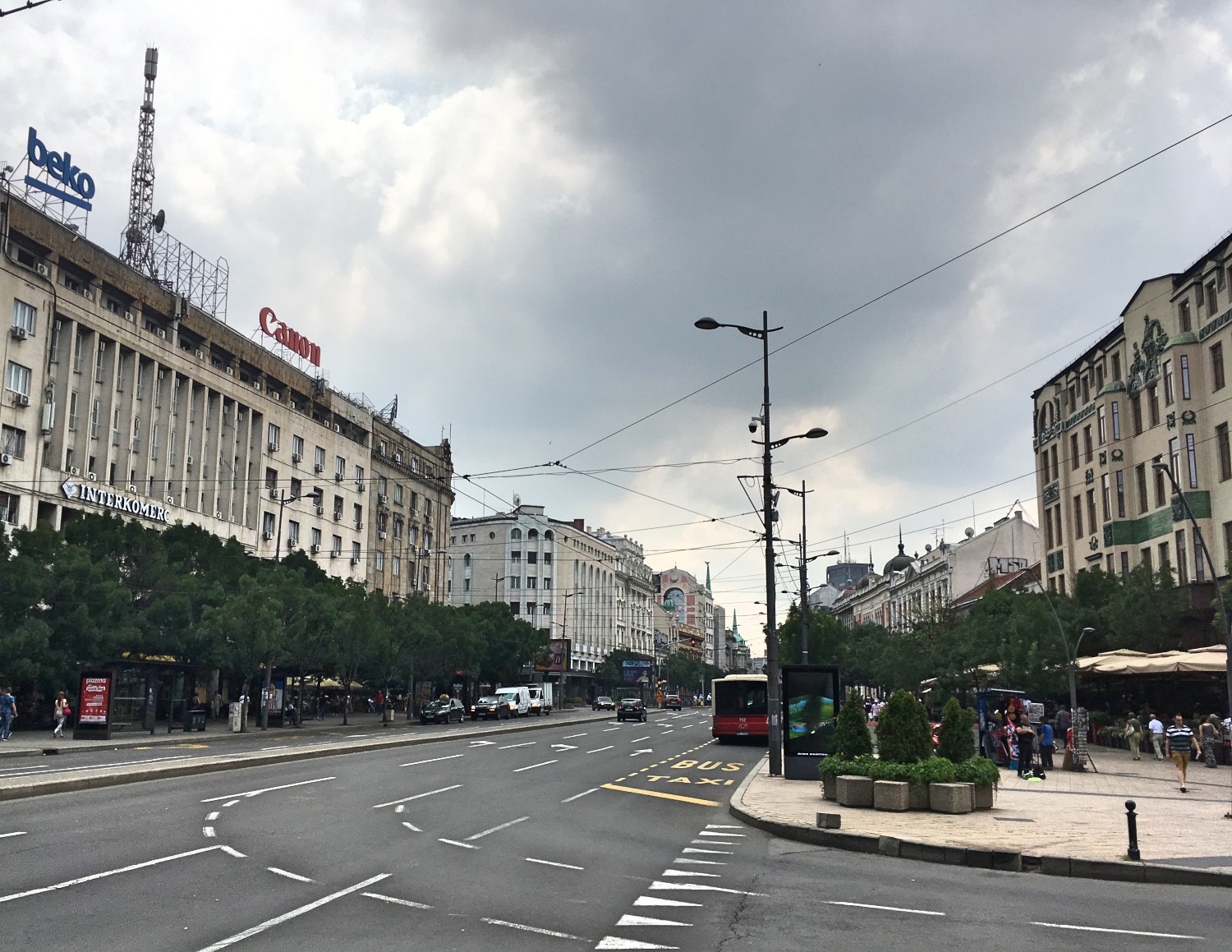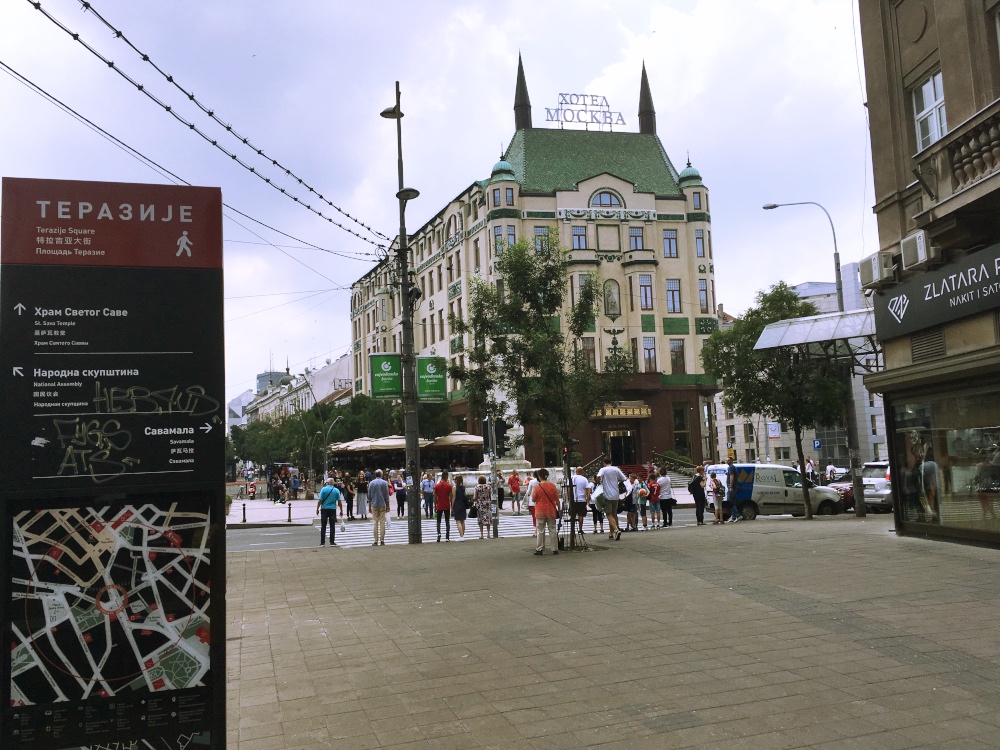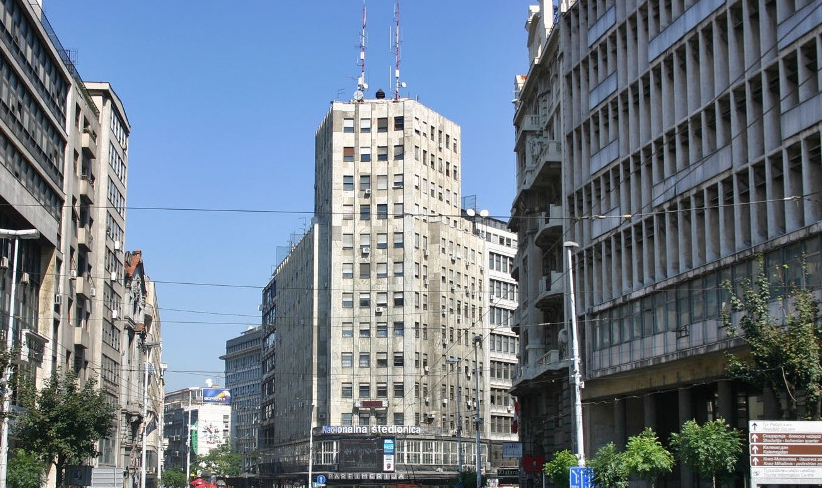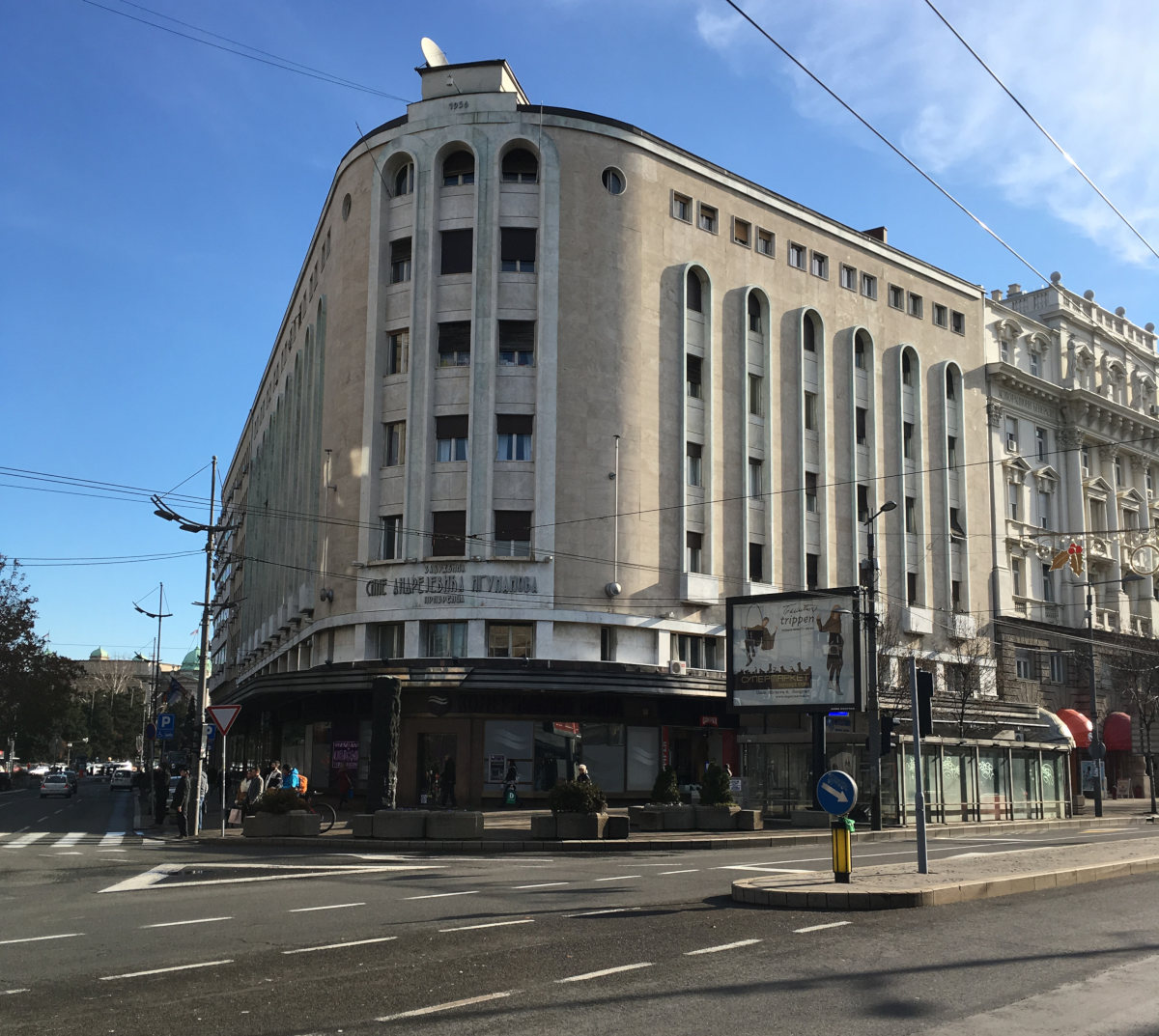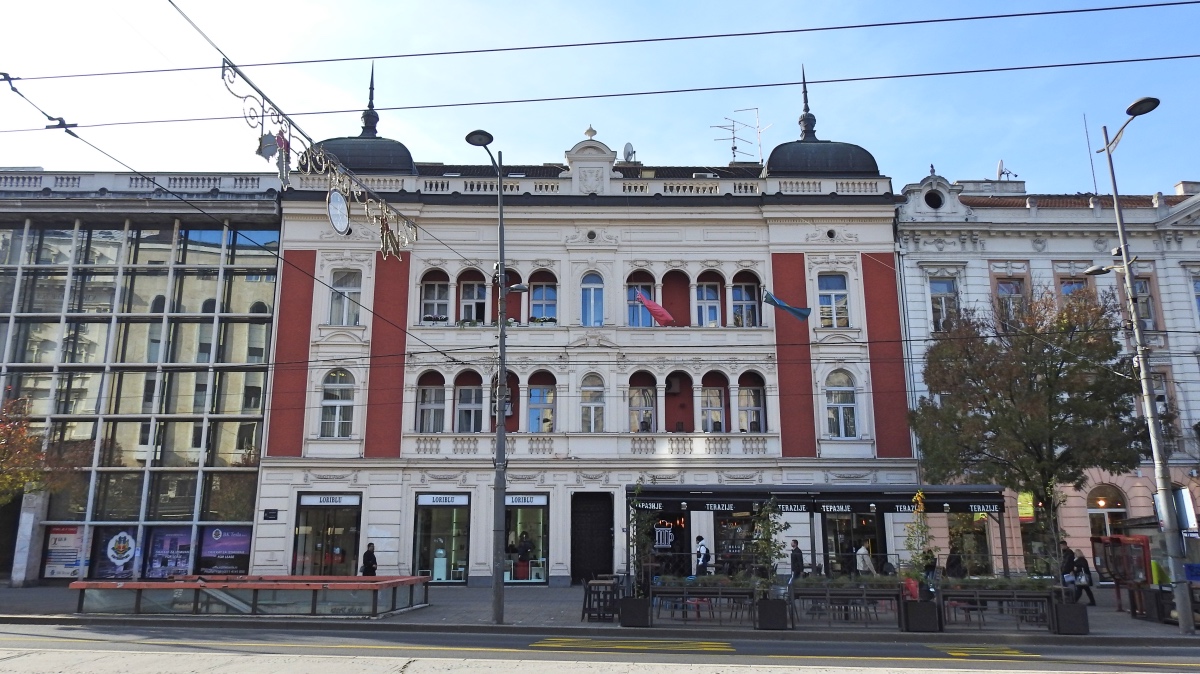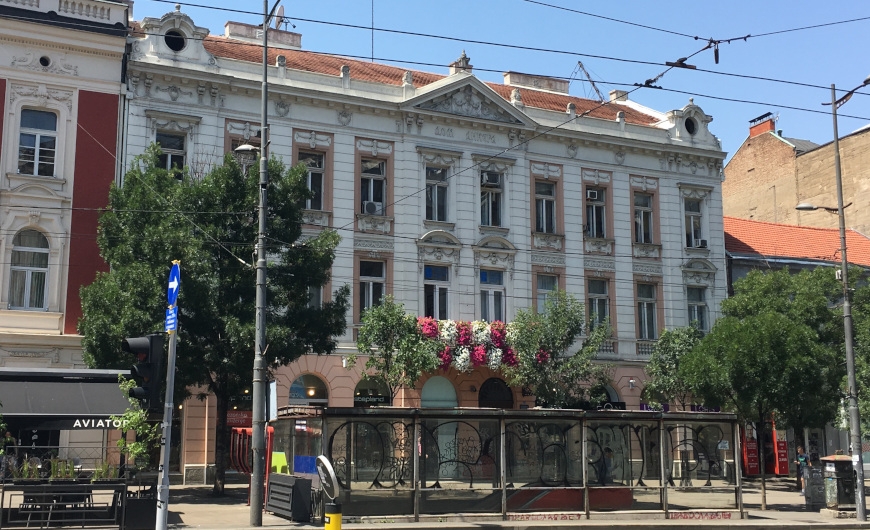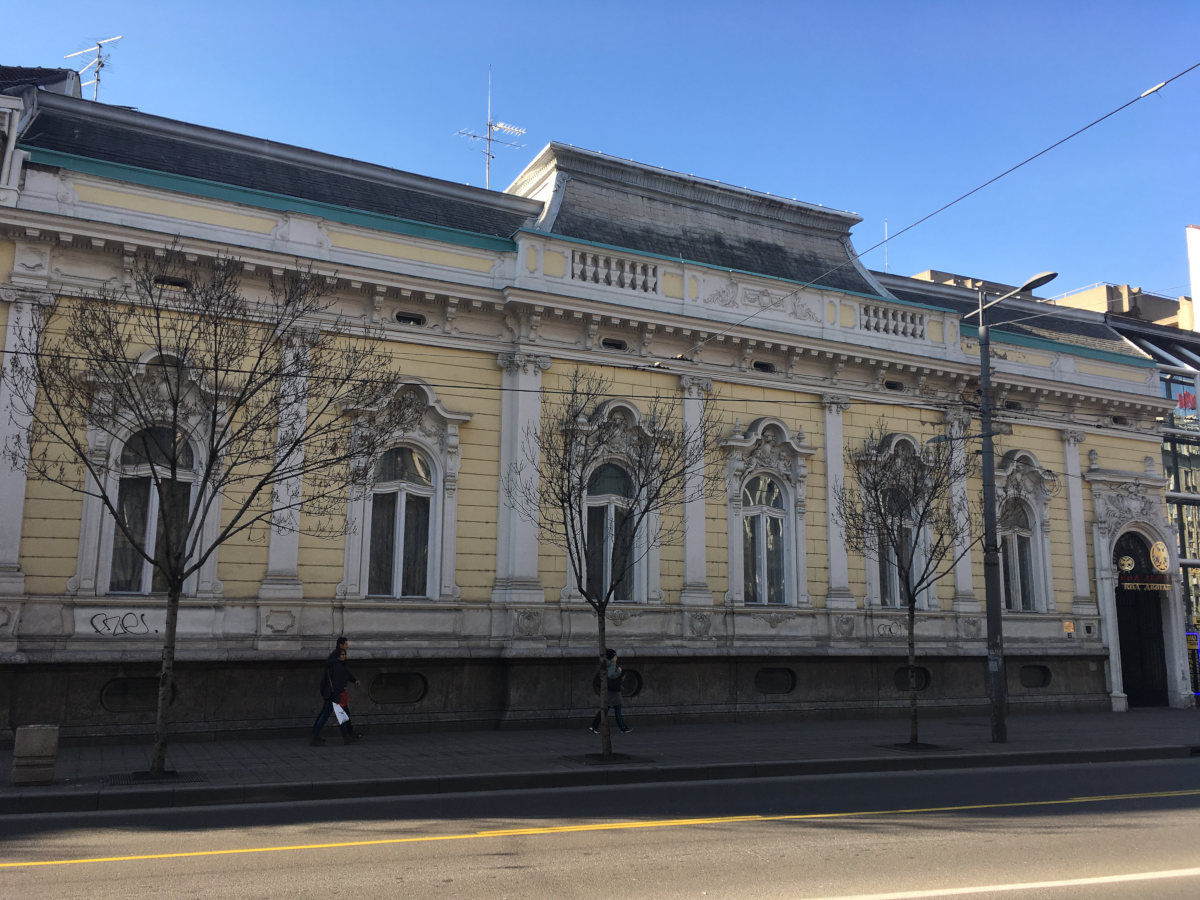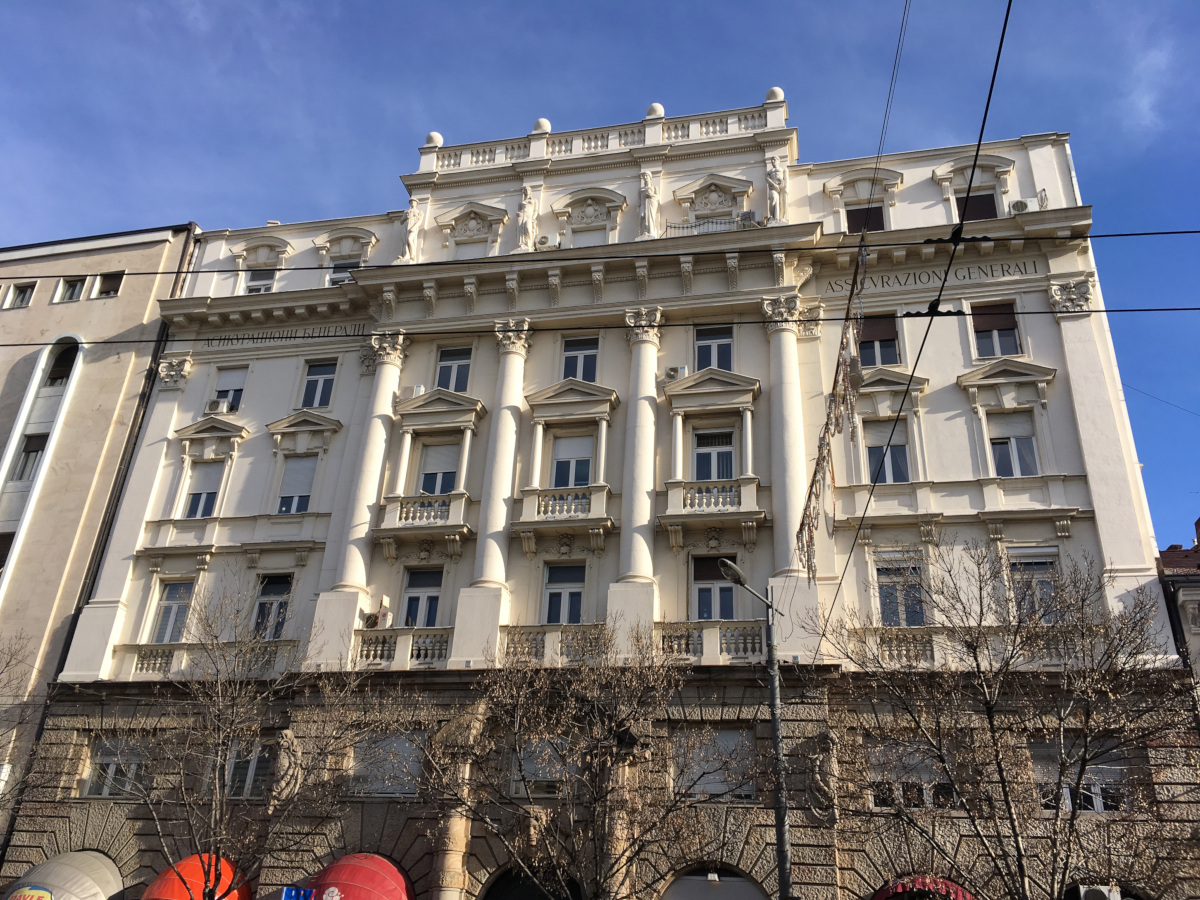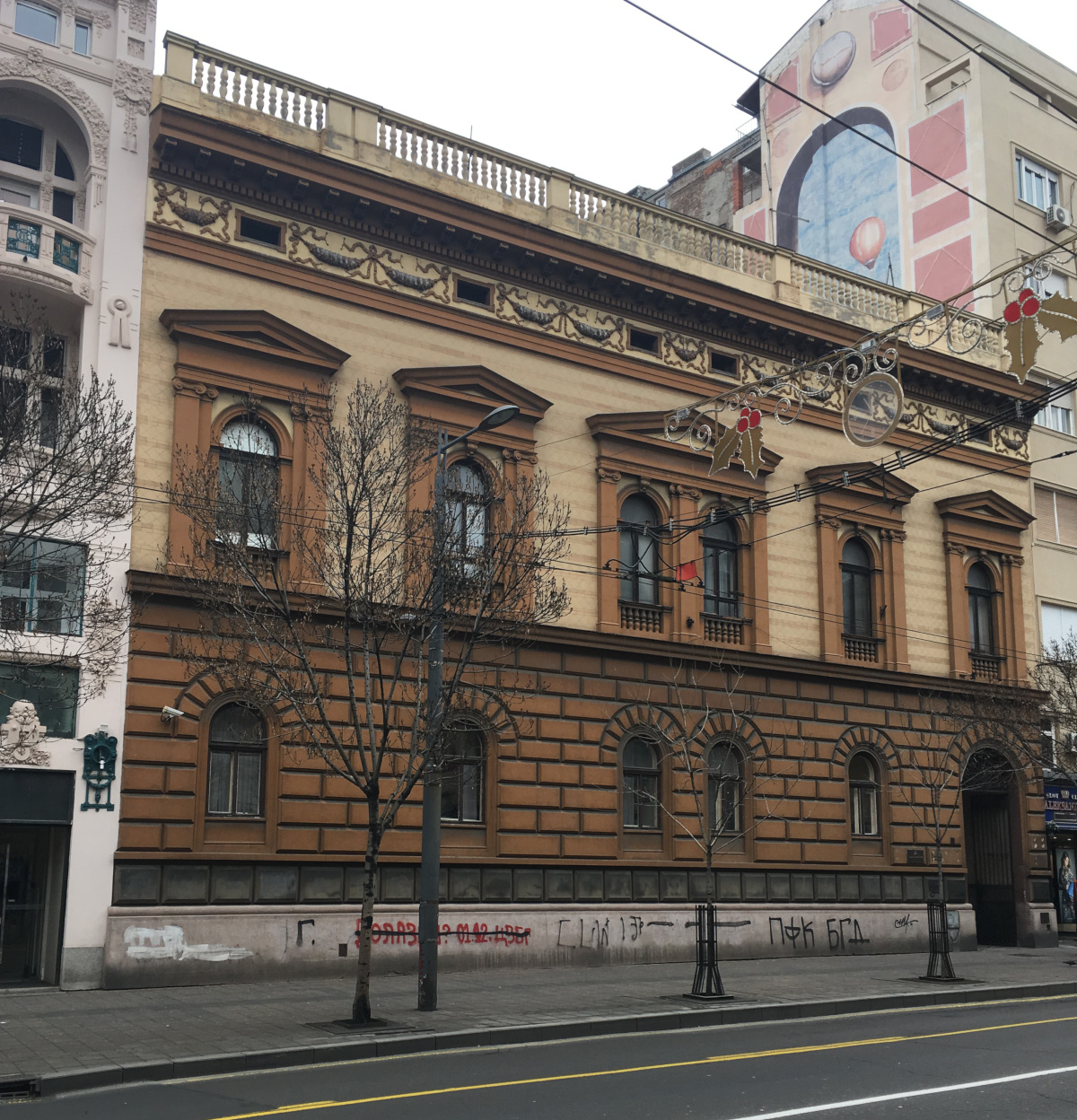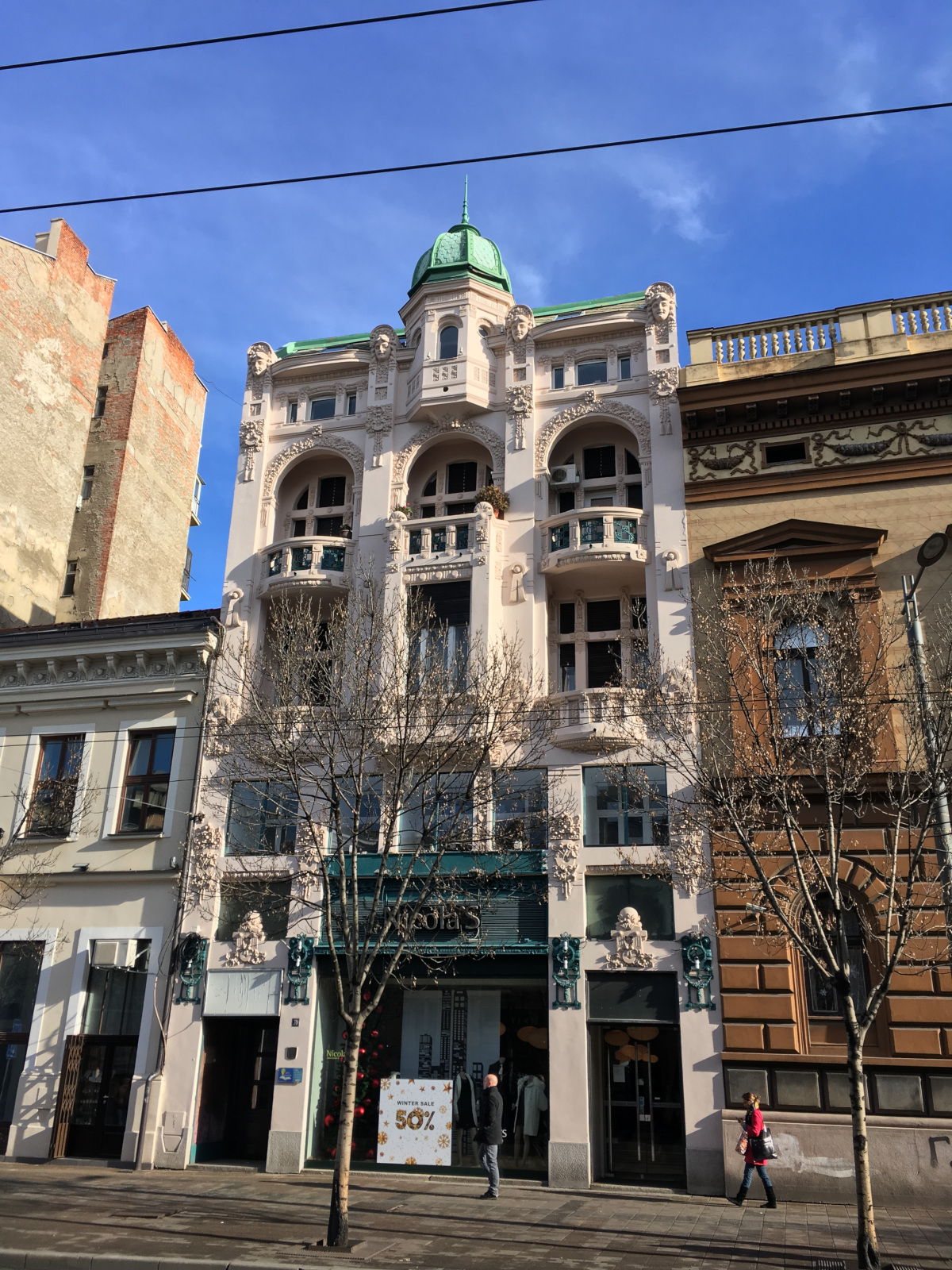Terazije street (or square) is the ground zero, the central point of the city. Like Puerta del Sol in Madrid, for example. All tourist expeditions should start here.
The main landmark of Terazije is the "Terazije fountain", built in 1860, located between two architectural jewels of the city - Hotel Moskva (eng. Hotel Moscow), built in style of the Russian secession in 1908, and Hotel Balkan.
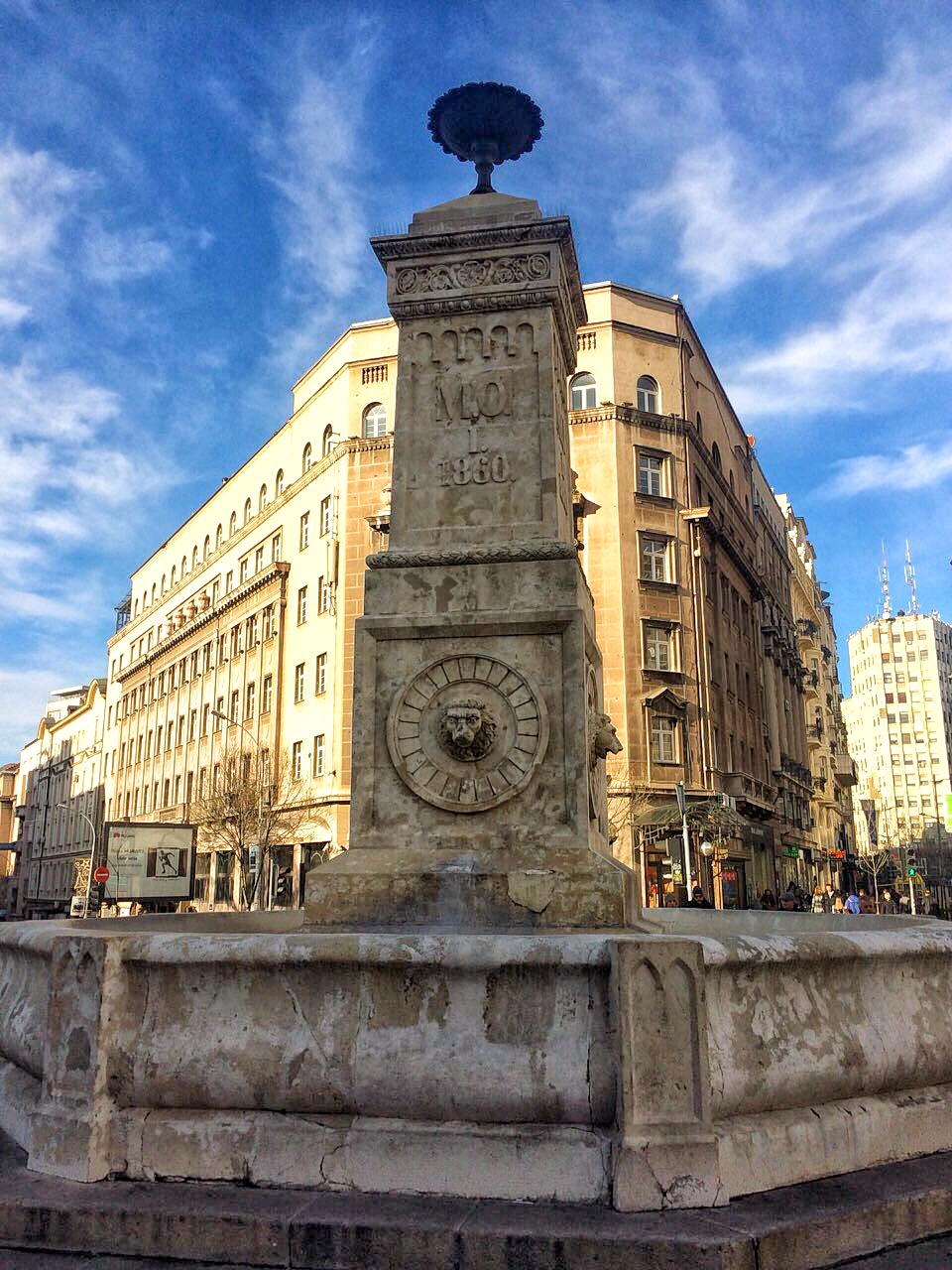
Terazije Fountain
This is the place with lots of hotels, restaurants, caffes, banks and business offices. It goes for about 300 meters, from Palace Albania (the entrance to the Knez Mihailova street, main pedestrian zone of the city) to the Old Palace (now City Hall).
Like Puerta del Sol in Madrid, for example, from this spot there are roads in numerous directions to all city's attractions.
From Terazije you can go down (Prizrenska street) to the Zeleni Venac district (eng. Green Wreath), with large green market and public bus station (direction New Belgrade and Zemun), and further to Branko's bridge and New Belgrade. Or you can go down (Balkanska street) to the old Main Railway Station, and Belgrade Waterfront (currently under construction). Also, you can easily reach the Republic Square, in about 100 meters, with National Museum, Neational Theater, and Knez Mihailo equestrian monument, which is considered as the main public square in Belgrade.
If you take Knez Mihailova street, passing by the monumental skyscraper Palace "Albania" which borders the square as a main landmark and high point of this part of the city, you will reach Belgrade Fortress in about 10 minutes on foot.

If you take a small passage to Nušićeva street, passing by many coffee shops and bars in the upper side of the street which is semi-pedestrian, you'll get to Politika square, with Politika Tower and Old Craftsmen Association Building (now Radio Belgrade) and further to Svetogorska street, Hilandarska street or down towards Skadarlija bohemian district.
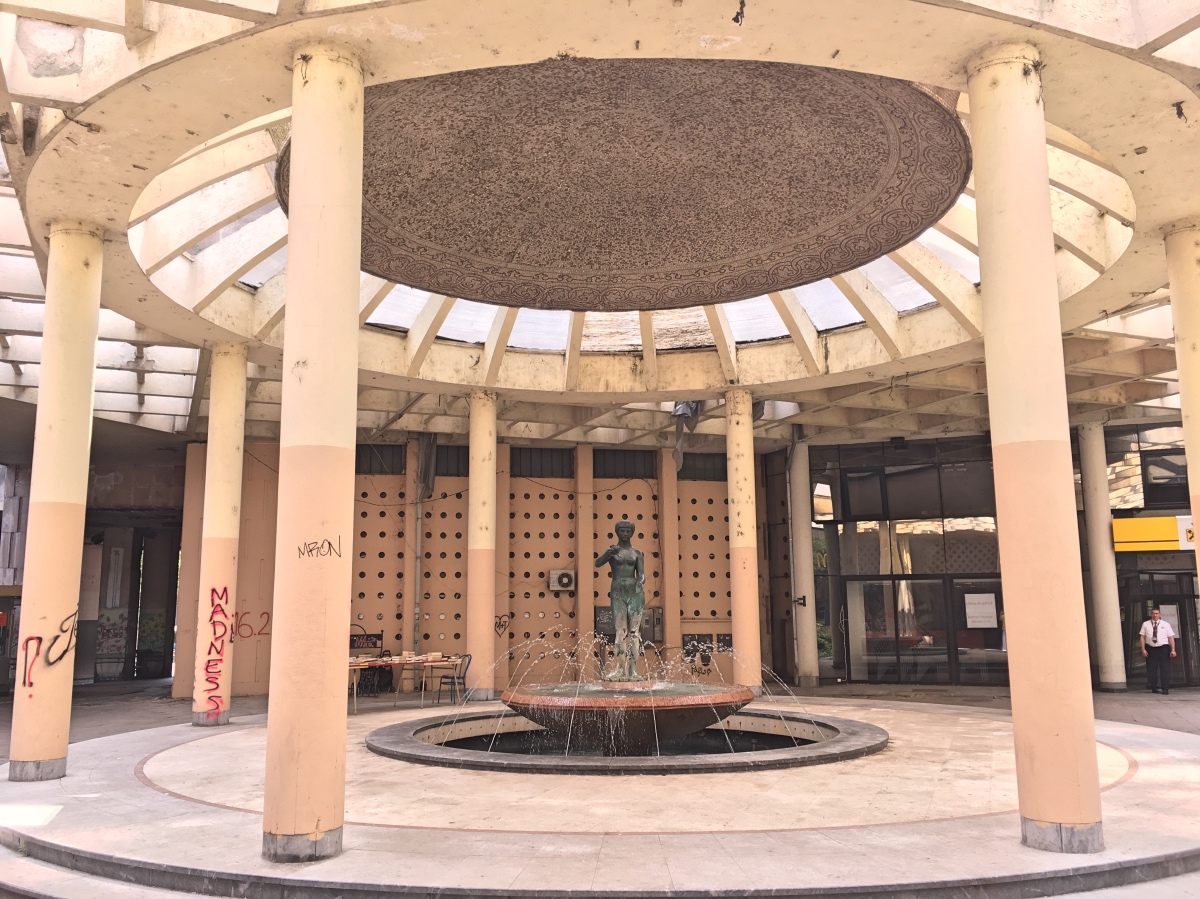
Bezistan
Going to the other side, you can reach Nikola Pašić square passing by Iguman's Palace (or through so called "Bezistan", which originates from Oriental culture and means "a covered market place" but here is envisioned as a passage or covered square with various shops, businesses and a fountain, and now closed movie theater "Kozara", due to fire several years ago), with National Assembly of Serbia, and further to Bulevar Kralja Aleksandra (eng. "King Alexander boulevard"), the largest avenue in the city (7.5 kilometers long).
If you move forward along Terazije street, you will pass by Palace "Anker", built 1899 in the style of academism, and Palace "Athens", built in 1902 in renaissance manner, and then you will continue to Kralja Milana street (eng. "King Milan street"), passing by the Old Palace (now City Hall), the New Palace (now Presidential Palace), London square and Belgrade Palace skyscraper, all the way to Slavija square and a little bit further on, to St. Sava's Church, one of the largest christian cathedrals in the world.
Hotel Moskva
Hotel "Moskva" (eng. "Hotel Moscow") is one the most representative structures in the center of Belgrade and one of its principal landmarks.
Built in 1908, in the architectural spirit of Secession, originally it was envisioned as the Palace Russia, with hotel and exclusive restaurant, but also appartments and business offices inside. Now, this is a four-star hotel with more than 130 rooms. If you book a place in this hotel, there is a big chance you will stay in one of the rooms where some of the world famous people stayed for a while, like the inventors and scientists Nikola Tesla, Thomas Edison and Albert Einstein, or movie people such as Alfred Hitchcock, Martin Scorsese, Roman Polanski, Orson Welles, Michael Douglas, Jack Nicholson, Robert de Niro, Tom Hanks, Audrey Hepburn, or writers Maxim Gorky, Albert Camus, Jean-Paul Sartre, Samuel Beckett, or singers like Frank Sinatra, Ray Charles, Luciano Pavarotti and many, many more. For more info visit the official web-site of the hotel.
Palace "Albania"
"Palace Albania" was built in 1938 in the style of late modernism, and at the time it was the tallest building in Belgrade. It is a crown jewel that gives a perfect shape to Terazije square.
This kind of monumental building was needed to complete the elyptical structure of Terazije square, instead of old and inconspicuous tavern called "Albania" that stood before in its place (and hence the origin of the name). But also symbolically, the name "Albania" was fit to represent the heroic effort of the Serbian army in the Great War (WWI), who crossed Albanian country retreating before a much larger Austro-Hungarian manpower (end of 1915), only to return triumphant a few years later (1918), pushing through Salonica Front. Built from ferrocement with marble panels, It has 13 floors and is 53 meters tall. The fascinating thing is that it was completely finished in less than a year. It overlooks Terazije square and it is placed at the entrance of Knez Mihailova street, main pedestrian zone in the city.
Iguman's Palace
The Iguman's Palace was built in 1938, and it bears the name of its original owner, a Serbian merchant Sima Andrejević Igumanov. It stands at the corner of Terazije street and Nikola Pašić square, at the very heart of the city. It was built in the Serbo-Byzantine fashion, in its modern version.
Sima Andrejević Igumanov was born in Prizren, in the southern Serbian province of Kosovo and Metohija. He gained his wealth selling snuff, which was highly demanded at the time. He was very religious and patriotic man. From this money he errected the Serbian Orthodox Seminary in his native city of Prizren (1872), and after his death the Church, the sole proprietor of his endowment, build the palace at Terazije square to fund the Serbian-Orthodox school of priesthood. The original project for Iguman's Palace, therefore, was much more traditional in the sense of a true Serbo-Byzantine style that resembled to Serbian medieval churches. However, and nobody could tell you how, the realization of the intended project differed and we got a highly modernized version of Serbian traditional style.
Palace "Athens"
Palata Atina (eng. "Palace Athens") is one of the most impressive buildings on Terazije square, and it will definitely attract your attention.
This building was constructed in 1902 in Neorenaissance fashion for residential/office purposes and got its (unofficial) name after the restaurant "Athens" that was opened on the ground floor. Beside ground level, it has basement and two floors.
Palace "Anker"
One of the buildings that stand out at Terazije square is Palace "Anker", built in 1899 in the architectural style of Academism for the purposes of the insurance company "Anker".
"Anker" was the first insurance company that came to Serbia, back in 1861. This Viennese company, whose name in English means "anchor", was also the most advertised insurance company in the late 19th and early 20th century Belgrade.
Krsmanović House
This building is constructed in late 19th century (1885), in the spirit of 19th century Academism. It was temporarily used as a Royal Palace, after the Great War (World War I).
The house is of great historical importance. It was the place where the union of the South Slavs where proclaimed in 1918, as the Kingdom of Serbs, Croats and Slovenes (since 1929 Yugoslavia).
Old Assicurazioni Generali Building
This magnificent palace was constructed in 1930 in the spirit of Academism for the Assicurazioni Generali company, from Trieste, Italy.
Now the headquarters of the Football Association of Serbia and the Volleyball Federation of Serbia are located in its premises on the mezzanine, the first and the second floor.
Old Ministry of Justice Building
This building is constructed for the Ministry of Justice of the Kingdom of Serbia. It still holds various national and international legislative institutions.
It was constructed in 1883. The facade shows Neorenaissance influence to the late 19th century architecture in Belgrade.
Old Bank of Smederevo Building
The building of "Smederevska banka" (eng. "Bank of Smederevo"), built in 1912, represents one of the most successful examples of secession in the architecture of Belgrade.
The Bank of Smederevo, the city some 60 km south-east of Belgrade, was opened in 1871 as one of the first three banks in Serbia. The construction of the building presented a real challange as the lot designated for this purpose at Terazije steet was pretty small - only about 40 meters long and 23 meters wide. But the solution was impressive. The basement, ground flor and mezzanine were intended for the offices, and the upper two floors with the penthouse were for residential purposes. And it is clearly distinguished on the facade of the building, which is pretty moderate in the graound level, and richly ornamented from the first floor up.
Old Export Bank Building
Built originally for the purposes of the Export Bank, in 1923, building at 5 Terazije street is one of the most impressive structures in Belgrade's principal square. It was designed in the spirit of Academism with the elements of Secession on the facade.
The entrance to the building, in fact, is a passage that leads you out of Terazije square, and it is 90 meters long. Behind this richly ornamented facade, only about 20 meters wide, therefore, 6 buildings are hidden, in a row. You can access its premises through the passage, which was also used for having small shops on the ground floor, and some of those remained until today. The appartments in the first building were magnificent, with 9 rooms. Now everything is adapted, and divided to have more space for companies and businesses that leased or bought property in it.
B2 smart building
This building was constructed from 2005 until 2008, principally for commercial use, and at the time it was the first smart building built in the Balkans, or so they said. It has a unified electronic system of control. It is called B2, as it is located at no. 2 Balkanska street, right accross Hotel "Moskva", and Terazije fountain. It overlooks Terazije Terrace, a slope that connects principal city square of Terazije with "Zeleni Venac" green market and further with Savamala historical district.
Built in the surroundings of an old, in classical sense, but also often worn out sets of buildings, this 21st century modern edifice looks refreshing. In 2012, the so-called "Olympic Clock" was placed on a plateau nearby, that perfectly fits into somewhat futuristic look of this tiny piece of Terazije Square. It gives us hope that better times are ahead of us, that Belgrade will guard its tradition but progress at the same time. The Terazije Terrace, in front of the building, needs to be taken care of, and as it was announced, the plans for its reconstructions are on the table.
Watch our video on Terazije square architecture and subscribe to our YouTube channel!
 English (United Kingdom)
English (United Kingdom)  Srpski latinica (Srbija)
Srpski latinica (Srbija) 

